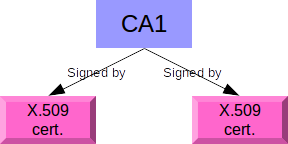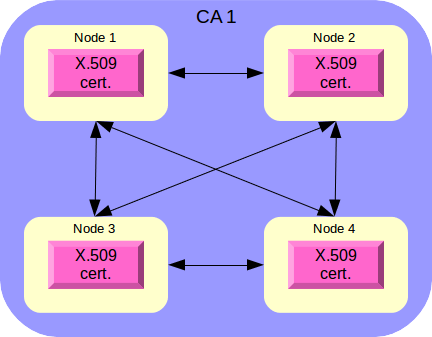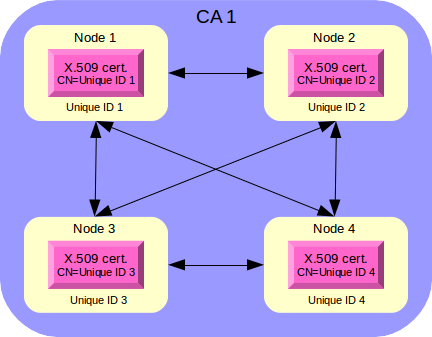FLoM security
FLoM security is based on two features:
- TLS (Transport Layer Security) protocol
- X.509 certificates
Very Important Note
The source code of FLoM has not yet been reviewed by a security expert. Please pay attention that there’s no guarantee related to FLoM security: you can use it, in accordance with the terms of the GNU General Public License, at your own risk. If you are a security expert and you want to collaborate, please post your feedback using the Discussion forum.
Security levels
FLoM provides 3 different security levels:
- no security: this is the default behavior
- channel encryption: this is the easiest security level to configure
- mutual authentication: this is the strongest security level offered by FLoM
No Security
The default behavior of FLoM is to use clear text TCP/IP sessions without any type of security. With this configuration:
- any FLoM client can connect to any FLoM server (daemon)
- all the network traffic flows without any form of encryption
Channel Encryption
With this configuration FLoM uses TLS to encrypt the TCP/IP network traffic and:
- a FLoM client can connect to a FLoM server (daemon) only if the client and the server use an X.509 certificate signed by the same certification authority
- all the network traffic is encrypted and protected by the algorithms implemented by TLS
Configuration example 1
Node 1 uses a X.509 certificate signed by the certification authority CA1. Node 2 uses a X.509 certificate signed by the certification authority CA1.

Configuration example 2
Node 1, 2, 3 and 4 use the same X.509 certificate.

You can create a network of secured peers with a set of X.509 certificates signed by a single certification authority. The easiest configuration re-uses the same certificate for many peers.
Mutual Authentication
This configuration extends Channel Encryption with a dedicated X.509 certificate for every node/system (physical or virtual) that hosts FLoM processes. This security level requires a more complex setup, but adds a security constraint: only the nodes/systems with a dedicated X.509 certificate signed by a specific certification authority can join and work together.
Every node in the network has its own Unique ID that can be retrieved with the command:
flom --unique-id
(FLoM uses dbus to retrieve a system unique identifier).
To set up mutual authetication you have to:
- generate a distinct certificate for every node
- put the unique ID value inside the CN (Common Name) field of the certificate metadata

Configuration examples
Follow these links for a full description of the configuration examples:
Debugging tools
TLS can be difficult to debug due to many possible issues:
- wrong X.509 certificates
- usage of private and public addresses
- firewalls between networks
FLoM provide an integrate debugging tool that can be used to test a TLS client/server and peer to peer connection. There are two debugging tutorials available: